Otoplasty in Delhi
Search and Compare the Best Clinics and Doctors at the Lowest Prices for Otoplasty in Delhi

Find the best clinics for Otoplasty in Delhi
With Medijump you can browse 7 facilities offering Otoplasty procedures in Delhi. The cheapest price available is $683 in Delhi
Otoplasty in India
Price: $ 683
Otoplasty in Delhi
Price: $ 683
Otoplasty in Bangalore
Price: $ 700
Egypt offers the best prices Worldwide
Price: $ 100
From 166 verified reviews
mohini bali, 30 August 2020
Dr Rajat Goel ( Bariatric Surgeon) He is best Dr in this world.
From 164 verified reviews
Sharanjiv kumar, 21 September 2020
Excellent Super Speciality Hospital
Skinnovation Clinics - The World of Aesthetics, located in New Delhi, Delhi, India offers patients Otoplasty procedures among its total of 33 available procedures, across 4 different specialties. The cost of a Otoplasty procedure ranges from £536 to £965, whilst the national average price is approximately £863. There are many specialists available at the Clinic, with 7 in total, and they have multiple recognized accreditations, including: IMA - Indian Medical AssociationAIIMS - All India Institute of Medical SciencesAPSI - Association of Plastic Surgeons of IndiaIAAPS - Indian Association of Aesthetic Plastic Surgeons
Dr Kishore FRCS : ENT & Cochlear Implant Specialist, located in New Delhi, Delhi, India offers patients Otoplasty procedures among its total of 7 available procedures, across 2 different specialties. Currently, there's no pricing information for Otoplasty procedures at Dr Kishore FRCS : ENT & Cochlear Implant Specialist, as all prices are available on request only, whilst the national average price is approximately $1,100. All procedures and treatments are undertaken by the lead specialist at the Hospital, and they have multiple recognized accreditations, including: ISO Certification - International Organization for StandardizationGMC - General Medical CouncilGMC - General Medical CouncilRCSEd - The Royal College of Surgeons of EdinburghGMC - General Medical CouncilRCPSG - Royal College of Physicians and Surgeons of GlasgowRCSEd - The Royal College of Surgeons of EdinburghDDC - Delhi Dental Council
ENT Specialist, located in New Delhi, Delhi, India offers patients Otoplasty procedures among its total of 2 available procedures, across 2 different specialties. Currently, there's no pricing information for Otoplasty procedures at ENT Specialist, as all prices are available on request only, whilst the national average price is approximately $1,100. There is currently a lack of information available on the specialists practicing at the Hospital, and they are not accredited by any recognized accreditations institutes
Ahuja Clinic, located in New Delhi, Delhi, India offers patients Otoplasty procedures among its total of 7 available procedures, across 3 different specialties. Currently, there's no pricing information for Otoplasty procedures at Ahuja Clinic, as all prices are available on request only, whilst the national average price is approximately $1,100. All procedures and treatments are undertaken by the lead specialist at the Clinic, and they are not accredited by any recognized accreditations institutes
Chisel Clinic, located in New Delhi, Delhi, India offers patients Otoplasty procedures among its total of 48 available procedures, across 6 different specialties. Currently, there's no pricing information for Otoplasty procedures at Chisel Clinic, as all prices are available on request only, whilst the national average price is approximately $1,100. All procedures and treatments are undertaken by the lead specialist at the Clinic, and they are accredited by MBBS - Bachelor of Medicine, Bachelor of Surgery
Compare Before & After Photos of _procedure_photos.phpOtoplasty
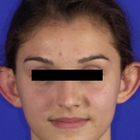
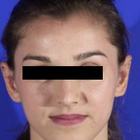
Front view
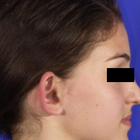
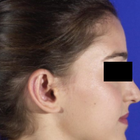
Full-side view
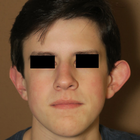

Front view

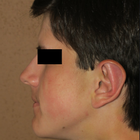
Full-side view
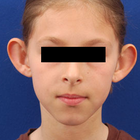
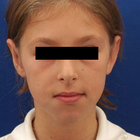
Front view
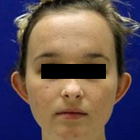
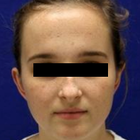
Front view
WHY US?
At Medijump, we're making medical easy. You can search, compare, discuss, and book your medical all in one place. We open the door to the best medical providers worldwide, saving you time and energy along the way, and it's all for FREE, no hidden fees, and no price markups guaranteed. So what are you waiting for?

Free

Best Price

Widest Selection

Risk-Free
What you need to know about Otoplasty in Delhi

Otoplasty, also referred to as cosmetic ear surgery, is a type of cosmetic procedure to change the size, shape, or position of the ear. It is performed on the visible part of the outer ear, called auricle. Some people choose to have the surgery to correct odd-shaped ears due to an injury or birth defect. Others have it because they are concerned with how their ears protrude too far from their head. Otoplasty can be performed at any age after the ears have reached their full size, generally after age 5. In some cases, the surgery may be done as early as age 3.
There are several types of otoplasty. The following are the most common:
- Ear pinning draws the ears closer to the head. It is usually done on people whose ears stick out too far from their head.
- Ear augmentation is ideal for individuals whose ears are small or have not completely developed. This type of otoplasty can increase the size of the outer ear.
- Ear reduction is usually done on people with macrotia, which is a condition when the ears are larger than normal. Otoplasty can reduce the size of the ears.
What does a Otoplasty Procedure Involve?
Otoplasty is typically carried out under local anesthesia with a sedative, so you will be awake but you will not feel any pain. In some cases, general anesthesia may be used, typically for younger children.
The techniques used by your surgeon vary based on the type of otoplasty you are having. In general, your surgeon makes an incision either within the inner creases of your ears or on the backs of your ears. Then, your surgeon manipulates the tissue of the ear, which may include removal of cartilage or skin, grafting of cartilage to the ear, or folding and shaping of cartilage using permanent stitches. Once your surgeon is done correcting the shape, size, and position of your ears, the incisions are closed with stitches.
How Long Should I Stay in Delhi for a Otoplasty Procedure?
Otoplasty can take between 1 and 3 hours to perform, depending on the complexity and the specifics of the procedure. It is typically done as an outpatient procedure, which means you can leave the hospital on the same day. It is recommended that you stay in Delhi for 7 more days for follow-up checkups and removal of stitches.
What's the Recovery Time for Otoplasty Procedures in Delhi?
The recovery period may vary from one person to another. You may experience numbness for several weeks, and mild bruising for about 2 weeks. For several months, your ears may feel stiff and sore.
You should be able to go back to work and resume your normal activities, including exercise, within one to two weeks after surgery. Physical contact sports, such as rugby, football, or judo, should be avoided for at least 3 months. You should also avoid swimming for up to 8 weeks following your otoplasty.
What sort of Aftercare is Required for Otoplasty Procedures in Delhi?
Your surgeon will provide post-operative instructions. Make sure to follow the instructions carefully to promote smooth and quick recovery. You should rest with your head elevated on 2-3 pillows to minimize swelling. It is recommended that you eat a light, soft, and cool diet for several days. Take pain medication as prescribed by your doctor. Avoid sleeping on your side or rub the incisions to keep pressure off your ears. Consider wearing shirts with loose-fitting collars or button-down shirts.
What's the Success Rate of Otoplasty Procedures in Delhi?
Otoplasty is a safe and effective procedure, with high satisfaction rates. More than 90% of people who had the procedure claimed to be extremely happy with the results. Note that it may take some time for the result to be fully visible.
While it is a safe procedure, you still need to be aware of possible risks and complications that otoplasty carries. These include bleeding, hematoma formation, infection of the skin, infection of the cartilage of the ear, permanent or temporary numbness around the affected area, scar or keloid formation, unfavorable results, prolonged pain, narrowing of the external ear canal, impaired healing, changes in skin sensation, asymmetry, and overcorrection.
Are there Alternatives to Otoplasty Procedures in Delhi?
There are not many viable alternatives to otoplasty as of yet. One of the most popular alternatives is nonsurgical otoplasty, which does not require any incisions. The procedure uses special sutures to pin the ears back and achieve a more symmetrical look. These sutures are woven into the ears and will remain in place permanently. They are also virtually invisible, so the results will look natural.
For babies under three months old with prominent ears, ear-molds can be taped to their ears to reshape the ears without surgery. This type of treatment typically takes about six to eight weeks.
What Should You Expect Before and After the Procedure
Before otoplasty, you may have prominent or large ears or other deformity caused by an injury or birth defect that bothers you. Some people also feel self-conscious and embarrassed by the shape, size, and position of their ears. After the procedure, your ears will be corrected. Small or underdeveloped ears will be augmented to increase the size, the size of large ears will be reduced, and prominent ears will be drawn closer to the head. Your appearance will improve and you may feel more confident.
Whilst the information presented here has been accurately sourced and verified by a medical professional for its accuracy, it is still advised to consult with your doctor before pursuing a medical treatment at one of the listed medical providers
No Time?
Tell us what you're looking for and we'll reachout to the top clinics all at once
Enquire Now

Popular Procedures in Delhi
Prices Start From $28

Prices Start From $1,945

Prices Start From $120

Prices Start From $275

Recommended Medical Centers in Delhi for Otoplasty

- Interpreter services
- Translation service
- Religious facilities
- Medical records transfer
- Medical travel insurance
- Health insurance coordination
- TV in the room
- Safe in the room
- Phone in the room
- Private rooms for patients available

- Interpreter services
- Translation service
- Religious facilities
- Medical records transfer
- Medical travel insurance
- Health insurance coordination
- TV in the room
- Safe in the room
- Phone in the room
- Private rooms for patients available

- Interpreter services
- Translation service
- Religious facilities
- Medical records transfer
- Medical travel insurance
- Health insurance coordination
- TV in the room
- Safe in the room
- Phone in the room
- Private rooms for patients available

- Interpreter services
- Translation service
- Religious facilities
- Medical records transfer
- Medical travel insurance
- Health insurance coordination
- TV in the room
- Safe in the room
- Phone in the room
- Private rooms for patients available

- Interpreter services
- Translation service
- Religious facilities
- Medical records transfer
- Medical travel insurance
- Health insurance coordination
- TV in the room
- Safe in the room
- Phone in the room
- Private rooms for patients available

- Interpreter services
- Translation service
- Religious facilities
- Medical records transfer
- Medical travel insurance
- Health insurance coordination
- TV in the room
- Safe in the room
- Phone in the room
- Private rooms for patients available

- Interpreter services
- Translation service
- Religious facilities
- Medical records transfer
- Medical travel insurance
- Health insurance coordination
- TV in the room
- Safe in the room
- Phone in the room
- Private rooms for patients available

- Interpreter services
- Translation service
- Religious facilities
- Medical records transfer
- Medical travel insurance
- Health insurance coordination
- TV in the room
- Safe in the room
- Phone in the room
- Private rooms for patients available

- Interpreter services
- Translation service
- Religious facilities
- Medical records transfer
- Medical travel insurance
- Health insurance coordination
- TV in the room
- Safe in the room
- Phone in the room
- Private rooms for patients available

- Interpreter services
- Translation service
- Religious facilities
- Medical records transfer
- Medical travel insurance
- Health insurance coordination
- TV in the room
- Safe in the room
- Phone in the room
- Private rooms for patients available
Otoplasty in and around Delhi
Introduction
Delhi is officially known as the National Capital Territory of Delhi (NCT). It is home to the capital of India, New Delhi. With a population of over 18 million, it is the second most populous city in the country. The city is brimming with vibrant modern life but also still steeped in history. People come to the city for its cultural richness and gastronomic scene.
Recently, Delhi has emerged as a medical tourists’ favorite destination. It’s the perfect place for those who seek low cost high-quality, world-class healthcare. India continues to expand its medical tourism sector with Delhi as one of the top hubs for medical facilities. Among the leading hospitals in Delhi are Max Super Specialty Hospital, Apollo Hospital Indraprastha, and BLK Super Specialty Hospital. Breast Augmentation and heart surgery procedures are two of the most popular procedures in the city. Patients come to Delhi for the following reason:
- State of the art medical facilities with international and local accreditation
- Skilled doctors, many of which trained in the UK
- English speaking doctors and staff
- Wide range, cost-effective procedures
- Traditional healthcare therapies and practices such as Ayurveda and yoga
Popular Areas in Delhi
Delhi is overflowing with enchanting history and colorful modern life. The city is made of layers of history, temples, monuments, markets, and UNESCO World Heritage Sites. Many tourists come to witness its charm and discover its hidden treasures. Go to Old Delhi and visit the Red Fort where a load of people fell in love with its beautiful structure influenced by Islamic, Persian, Hindu, and Timurid traditions. Learn Islamic history in one of the largest mosque in India, Jama Masjid. Shop in Chandni Chowk Market, the largest shopping hub in Delhi. Pay your respect in Raj Ghat, a memorial dedicated to Mahatma Gandhi.
There is also New Delhi, India’s capital, where you can stroll around India Gate, a war memorial that was inspired by the Arc de Triomphe. Humayun’s Tomb, the tomb of the Mughal Emperor Humayun, is also worth a visit for anyone who loves history. Don’t forget to go to the Gandhi Museum (Gandhi Smirti) to learn more about the leader of Indian independence’s life. Tourists can also visit an enthralling historical site known as Purana Qila. In your spare time, you can shop in Janpath Market and Sarojini Market.
South Delhi has many sites to enjoy such as the unique Lotus Temple, the soaring tower of victory Qutab Minar, and the thriving nightlife of Hauz Khas Village. This district also has a famous shopping paradise including Dilli Haat, Shahpur Jat, GK 1 N-block market, and Dastkar Nature Bazaar.
Weather and Climate in Delhi
Delhi has a high variation of temperature between summer and winter. Summer in Delhi can get really hot with an average temperature of around 32°C. The season starts in April to June and the temperature can reach as high as 46°C. It is advisable to avoid this season if you’re planning to do a lot of outdoor activities. The monsoon starts in late June to mid-September. The temperature usually falls to an average of 29°C, but it’s rainy and humid.
The temperature plummets during winter, ranging between 6°C to 7°C. This season starts in November and lasts until March. October to March is the best time to visit Delhi because the weather is neither too hot or too cold.
Getting Around in Delhi
Indira Gandhi International Airport, located 16 km from New Delhi city center, is the busiest airport in India. This airport serves domestic and international flights that connect the city with almost every country across the globe. Terminal 1 is used by budget airlines such as IndiGo and SpiceJet, while Terminal 3 is mainly used for international operations and several domestic flights.
The city center can be reached by bus, airport taxi, and metro. The bus is the most affordable option although it can be very crowded. Taxi is a good way to travel but always use licensed taxis such as WTi Cabs, Meru, and Mega Cabs. App-based taxis like Ola and Uber is another choice of travel. The fastest way to travel to Delhi’s city center is by The Delhi Metro. The travel time is less than 25 minutes and should cost around 10 INR to 60 INR.
There are several transportation modes to get around Delhi. The Delhi Metro is the best option to travel around because it offers comfort and fast travel. Taxis are widely available in the city. The easiest way to call a taxi is by the Ola app. It’s usually cheaper to use Ola than a local taxi stands.
For shortstops, opt for auto rickshaws. They’re affordable and easy to find. Make sure to negotiate the fare before getting in because most drivers will refuse using the meter. The drivers are also known to overcharge foreign visitors. Driving around Delhi is not recommended since the traffic can be time-consuming and there is a lot of bad driving. You can always hire a local driver if you want to get around by car.
Tourist Visas in Delhi
Citizens of Nepal and Bhutan can enter India without a visa. Citizens of Japan and South Korea can apply for a visa on arrival. Citizens of 150 countries can apply for e-Visa which is valid for 60 days. There are medical and medical attendant e-visas for tourists who come for healthcare. Other nationalities are required to apply and obtain a visa before entering the country.
All visitors must hold a passport valid for at least 180 days after their entry to India and should have at least two blank pages.
Additional Information
- Local Currency: the official currency is the Indian rupee (INR). 1 USD converts to 70 INR.
- Money & Payments: Major currencies such as US dollars, euros, and pounds sterling are easy to change throughout the city. The easiest way to exchange money is by using ATMs. Some shops, restaurants, and hotels will accept credit cards. It is advisable to always carry cash since a lot of places still accept cash only. Restaurants sometimes add a 10% service fee to the bills.
- Local Language: Hindi is the official language of Delhi. Urdu and Punjabi are widely spoken. Most people will be familiar with English. Many young people shop keepers, and tour guides can speak English very well.
- Local Culture and Religion: The major religion is Hinduism, followed by Islam, Christianity, Sikhism, Jainism, Buddhism, and Judaism.
- Public Holidays: The city celebrates major religions (Hindus, Muslims, and Christians) holidays. The city hosts many festivals all year round such as The Grub Fest, The Palate Fest, and Holi Festival.
Popular Searches
- Plastic Surgery in Thailand
- Dental Implants in Thailand
- Hair Transplant in Thailand
- Breast Augmentation Thailand
- Gastric Sleeve in Thailand
- Gender Reassignment Surgery in Thailand
- Laser Hair Removal in Bangkok
- Botox in Bangkok
- Dermatology in Bangkok
- Breast Augmentation in Bangkok
- Coolsculpting in Bangkok
- Veneers in Turkey
- Hair Transplant in Turkey
- Rhinoplasty in Turkey
- Stem Cell Therapy in Mexico
- Rhinoplasty in Mexico
- Liposuction in Mexico
- Coolsculpting in Tijuana
- Rhinoplasty in Korea
- Scar Removal in Korea
- Gastric Sleeve in Turkey
- Bone Marrow Transplant in India
- Invisalign in Malaysia
- Plastic Surgery in the Dominican Republic
- Tummy Tuck in the Dominican Republic
- Plastic and Cosmetic Surgery in Poland
- Rhinoplasty in Poland
- Hair Implant in Poland
- Dental Implants in Poland
- IVF in Turkey






